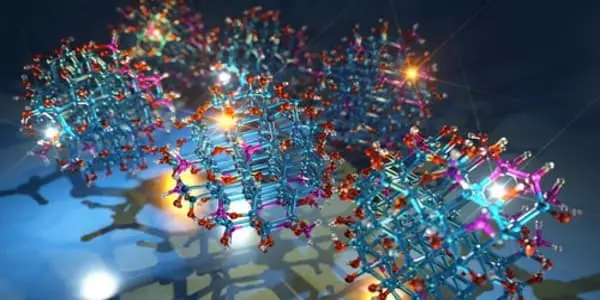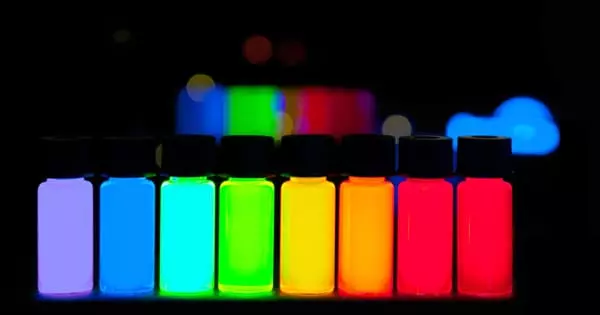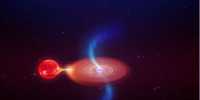Quantum dots have a wide range of potential applications, but their ability to blink off at random intervals limits their use. Chemists have developed a method to control this unwanted blinking that does not require any changes to the formulation or manufacturing process.
Quantum dots, which were discovered in the 1990s, have a wide range of applications, but are perhaps best known for producing vibrant colors in some high-end televisions. However, progress has been hampered for some potential applications, such as tracking the biochemical pathways of a drug as it interacts with living cells, due to one seemingly uncontrollable characteristic: a tendency to blink off at random intervals. When the dots are used in aggregate, such as on TV screens, this is unimportant, but in precision applications, it can be a significant disadvantage.
A team of chemists at MIT has developed a method to control this unwanted blinking without requiring any changes to the formulation or manufacturing process. The quantum dot’s blinking is eliminated for a relatively long period, tens of billions of times longer than the laser pulse, by firing a beam of mid-infrared laser light for an infinitesimal moment — a few trillionths of a second.
Quantum dots are nanometer-sized particles made of semiconductor material with a “bandgap” between the energy levels of its electrons. When such materials absorb energy from light, electrons can move to a higher energy band; when they return to their previous level, energy is released in the form of a photon, a light particle.
Moungi Bawendi
The new technique is described in a paper published in Nature Nanotechnology by MIT doctoral students Jiaojian Shi, Weiwei Sun, and Hendrik Utzat, chemistry professors Keith Nelson and Moungi Bawendi, and five others.
Quantum dots are nanometer-sized particles made of semiconductor material with a “bandgap” between the energy levels of its electrons. When such materials absorb energy from light, electrons can move to a higher energy band; when they return to their previous level, energy is released in the form of a photon, a light particle. By varying the shapes and sizes of the dots, the frequency of this light, which determines its color, can be precisely tuned. Quantum dots have the potential to be used as solar cells, transistors, lasers, and quantum information devices in addition to display screens.
The blinking phenomenon was first observed in the 1990s, shortly after the invention of quantum dots. From then on, Bawendi says, “I’d give presentations [about quantum dots] and people would say, ‘just make this go away!'” As a result, much effort was expended in attempting to eliminate it, either by engineering the interface between the dot and its environment or by adding other molecules. However, none of these things worked particularly well or were easily replicated.”
Sun explains, “We know that for some quantum information applications, we need a perfect single-photon emitter source.” However, current quantum dots, which would otherwise be well-suited to such applications, “will turn on and off randomly, which is actually detrimental for any of the applications that use the photoluminescence from the dots.”

However, she claims that, as a result of the team’s research, “We use these ultra-fast mid-infrared pulses, and the quantum dots remain ‘on.’ This has the potential to be very useful for applications such as quantum information science, where a bright source of single photons with no intermittency is required.”
Similarly, eliminating blinking is critical for biomedical research applications, according to Shi. “Many biological processes, such as tracking applications, necessitate the use of a steady photoluminescent tag for visualization. When we take medications, for example, we want to see how the drug molecules are internalized in the cell and where they end up in the subcellular organelles.” “But if the quantum dots start blinking a lot, you basically lose track of where the molecule is,” he says, adding that this could lead to more efficient drug-discovery processes.
Nelson, the Haslam and Dewey Professor of Chemistry, explains that the cause of the blinking phenomenon is most likely due to extra electrical charges, such as extra electrons, attaching to the outer part of the quantum dots, altering the surface properties and creating other pathways for the extra energy to be released rather than by emitting light.
“Various things can happen in a real environment,” Nelson explains, “such as the quantum dot having an electron glommed onto it somewhere near the surface.” Instead of being electrically neutral, the quantum dot now has a net charge, and while it can still return to its ground state by emitting a photon, “the extra charge unfortunately also opens up a whole bunch of additional pathways for the electron’s excited state to return to the ground state without emitting a photon,” such as by shedding heat.
When the quantum dots are zapped with a burst of mid-infrared light, the extra charges tend to be knocked off the surface, allowing the quantum dots to produce stable emissions and stop blinking.
According to Utzat, this is a “very general process” that could be useful for dealing with anomalous intermittency in other devices, such as nitrogen vacancy centers in diamond, which are being used for ultra-high-resolution microscopy and as sources of single-photons in optical quantum technologies. “Even though we’ve only demonstrated it for one type of workhorse material, the quantum dot, I believe we can apply this method to other emitters,” he says. “I believe the basic effect of using this mid-infrared light is applicable to a wide range of different materials.”
According to Nelson, the effect may not be limited to mid-infrared pulses, which are currently reliant on bulky and expensive laboratory laser equipment and are not yet ready for commercial applications. The same principle, he says, could apply to terahertz frequencies, which have been researched in his lab and others and could lead to much smaller and less expensive devices.














